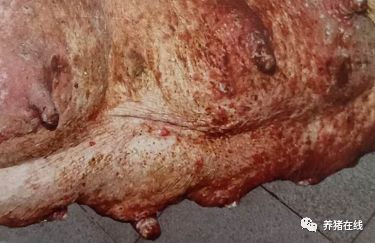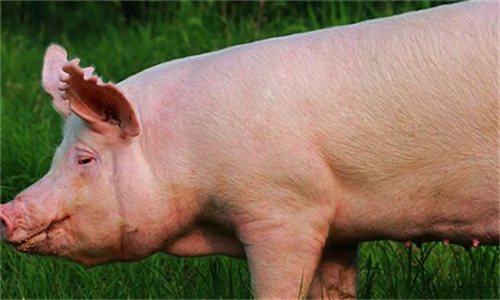How to prevent and cure yellow dysentery during the period of feeding and management of piglets?
Yellow dysentery of piglets is an acute and fatal infectious disease that often occurs in newborn piglets. We should attach great importance to it in the process of feeding and management of piglets. The disease usually occurs within a few hours to 3 days after birth. The morbidity and mortality of piglets are very high. It is one of the severe infectious diseases that harm suckling piglets.
After the disease of piglets, if we do not take comprehensive control measures and timely treatment, the whole litter of piglets will die and lose a lot. The disease does great harm to the pig industry.

1. The epidemic characteristics of yellow dysentery in the process of feeding and management of piglets:
It mainly occurred in 1-3-day-old piglets, and rarely occurred in piglets over 7 days old. The disease often occurs in a litter, and the mortality rate is very high.
Infected sows are the main source of infection of the disease, which excretes bacteria from feces and infects the nipples, skin and environment of sows. Piglets enter the gastrointestinal tract after birth, when sucking nipples and licking the skin of sows, or when they come into contact with infectious materials.
New pig farms and the introduction of breeding pigs from different farms, such as the history of yellow dysentery of piglets, will also lead to the spread of the disease. The epidemic of the disease is not seasonal.
Once piglet yellow dysentery is prevalent in pig farms, it will continue for a long time and it is difficult to eradicate it. Therefore, it is necessary to grasp the early and the small, and take comprehensive and scientific prevention and control measures to extinguish them.
Second, the clinical symptoms of yellow dysentery in the process of feeding and management of piglets:
Piglets are born in fashion and healthy. Some piglets develop the disease about 12 hours after birth, and some occur at the age of 1-3 days.
The most acute type dies suddenly without showing clinical symptoms. The sick piglets suddenly developed diarrhea, yellow paste-like or yellow water-like feces, and contained curd tablets.
Sick piglets anal relaxation, capture will be due to struggle or cry and increase abdominal pressure, often excreted from the anus, water-like ejection.
The course of the disease was slightly longer, lost weight quickly, became dehydrated, and finally died of pig exhaustion and coma. However, there was no vomiting in the piglets with this disease.
3. Pathological anatomy of yellow dysentery in the process of feeding and management of piglets:
Autopsy findings: common changes of acute catarrhal inflammation and septicemia of the small intestine. The mucous membrane of the small intestine is red, swollen, congested or bleeding; the small intestine is filled with gas and the intestinal wall becomes thin and relaxed. Redness of gastric mucosa and enlargement of mesenteric lymph nodes. Seriously, the heart, liver, kidney and other organs have bleeding spots, and some have small necrotic foci.
4. the main points of diagnosis of yellow dysentery in the process of feeding and management of piglets:
First, the epidemic characteristics: mainly postnatal piglets, fall ill a few hours later to 3 days before age. The highest incidence of piglets per litter is 100%.
The second is the characteristics of symptoms: a few hours after birth, piglets suddenly develop the disease, discharge yellow water-like sparse feces, containing milky patches, with acute onset, short course of disease and high mortality.
The third is the characteristics of autopsy: the small intestine of diseased piglets showed acute catarrhal inflammation and septicemia. The most serious lesion was duodenum, and hemorrhagic catarrhal lesions were common. There are small bleeding spots or small necrotic lesions in the heart, liver, kidney and so on.
5. preventive measures of yellow dysentery in the process of feeding and management of piglets should control the occurrence of yellow dysentery of piglets. In order to get to the root of the problem, it is necessary to do "three things well":
First, it is necessary to do a good job in the environmental hygiene and disinfection of pig pens. The delivery room should be kept clean and dry, do not accumulate sewage and fecal urine, pay attention to ventilation, and keep warm.
Before giving birth, the sow should thoroughly clean, wash and disinfect the delivery room. Put clean bedding on it. After the sow gives birth, put the piglet in a sterilized incubator or basket without contact with the sow.
After scrubbing the nipple, breast, chest and abdominal skin of the sow with 0.1% potassium permanganate solution (disinfection), squeeze out a few drops of milk one by one, and then let the piglets breast-feed, thus cutting off the route of infection.
The second is to do a good job in the use of medicine before "opening milk" to newborn piglets. It is after the piglet is born, before letting the piglet eat colostrum, the whole litter is taken orally with antibiotics (gentamicin, streptomycin, etc.). Take it once a day for 3 days. Prevent the disease from entering through the mouth.
Third, it is necessary to do a good job in vaccinating sows and improve the protection rate. China has made bivalent genetic engineering vaccine of Escherichia coli K88ac-LTB, bivalent genetic engineering vaccine of Escherichia coli K88 and K99 and trivalent inactivated vaccine of Escherichia coli K88, K99 and 987p. The first two were immunized orally and the latter were immunized by injection.
All patients were immunized 15-30 days before delivery (see instructions for specific usage).
After immunization of sows, there are high levels of anti-Escherichia coli antibodies in serum and colostrum, which can make piglets get a high protection rate of passive immunization.
6. treatment of yellow dysentery in the process of feeding and management of piglets:
First, the principle of treatment: if a piglet is found to be suffering from piglet yellow dysentery, preventive treatment should be given to the whole litter of piglets. Otherwise, after the onset of treatment, the effect is often not good.
The second is the treatment: the preferred drugs for antibiotics and sulfonamides are gentamicin, kanamycin and streptomycin sulfate.
Gentamicin 4-11 mg / kg body weight, twice a day, orally; 4-7 mg / kg body weight, once a day, intramuscular injection
Kanamycin 5-15 mg / kg body weight, twice a day, intramuscular injection
Ethyl ciprofloxacin, 2.5-10.0 mg per kg body weight, twice a day, intramuscular injection
Chloramphenicol 50 mg per kilogram of body weight per day, intramuscular injection
80 thousand units of penicillin plus 80 mg of streptomycin sulfate, once orally, twice a day
0.5 grams of sulfamidine plus 0.1 grams of trimethoprim, 5-10 mg per kg body weight, twice a day.
Qingzengan injection is 0.2 ml per kilogram of body weight, twice a day, orally.
Through the above: master the effective methods of prevention and treatment of yellow dysentery in the process of feeding and management of piglets. In addition, the knowledge of pig raising technology and disease prevention and control should be improved to promote the healthy growth and development of piglets, so as to achieve the ideal breeding effect.
- Prev

How to prevent swine blister disease in pig farms? What's the difference between foot and mouth disease?
How to prevent swine blister disease in pig farms? What's the difference between foot and mouth disease?
- Next

Look, there are three major reasons and countermeasures for red spots on pigs!
Look, there are three major reasons and countermeasures for red spots on pigs!
Related
- On the eggshell is a badge full of pride. British Poultry Egg Market and Consumer observation
- British study: 72% of Britons are willing to buy native eggs raised by insects
- Guidelines for friendly egg production revised the increase of space in chicken sheds can not be forced to change feathers and lay eggs.
- Risk of delay in customs clearance Australia suspends lobster exports to China
- Pig semen-the Vector of virus Transmission (4)
- Pig semen-the Vector of virus Transmission (3)
- Five common causes of difficult control of classical swine fever in clinic and their countermeasures
- Foot-and-mouth disease is the most effective way to prevent it!
- PED is the number one killer of piglets and has to be guarded against in autumn and winter.
- What is "yellow fat pig"? Have you ever heard the pig collector talk about "yellow fat pig"?

